Turning Fabric into Book Cloth
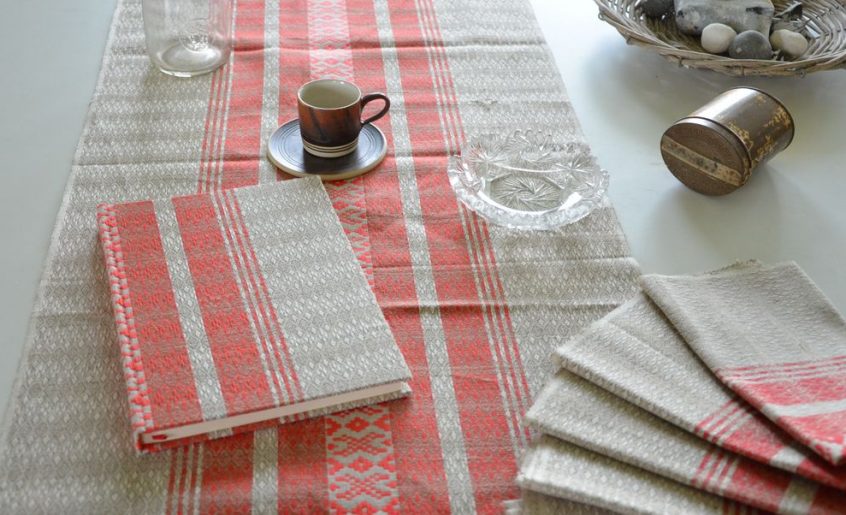
In my childhood every now and then little boxes would surface from somewhere, which were in a special way fascinating for me. Inside the boxes there would be delicate fans artistically painted in Chinese style, wooden chopsticks beautifully decorated with mother-of-pearl, or tiny animals carved from jade.
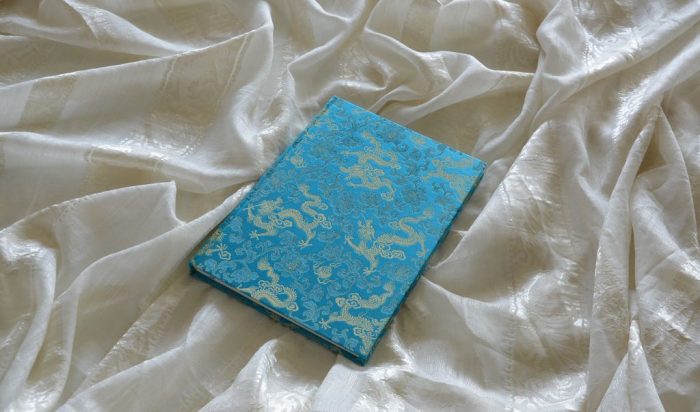
The boxes came from the Far East, most likely from China or Japan, and they came with a cover made from brocade, the lids often additionally upholstered, sometimes with clasps made from ivory. Basically the boxes were made from cardbord and then clothed with precious fabric.
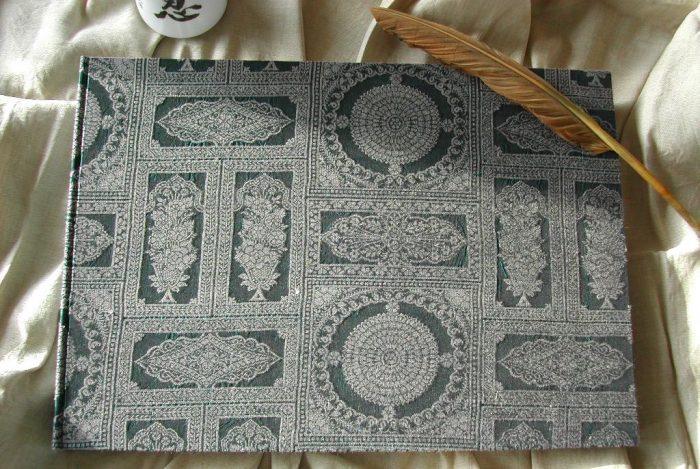
In Asia using ordinary fabric as book cloth is traditional and part of the craft of bookbinding. At arts&crafts fairs I exhibited, I have met bookbinders who remembered that making book cloth from fabric had been part of their training as apprentices, and they then decided to never try it again and always use industrial book cloth. Exclusively. They felt making it themselves was just far too laborious and frustrating.
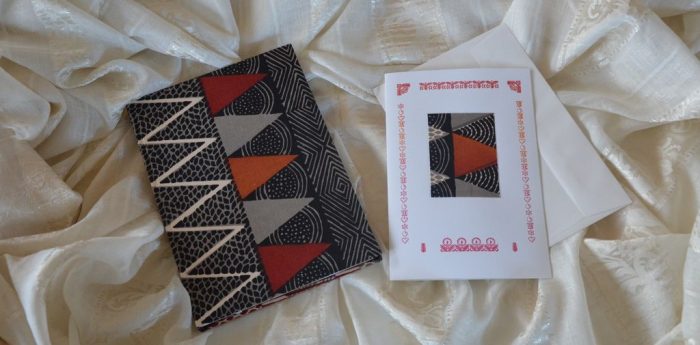
Fabric is made by weaving and naturally comes with tiny openings between the interwoven threads. When using the fabric as cover for a book we need to glue it onto the cardboard cover. And here the fluid glue will leak through the mesh, be it as dense as weaving can make it, and produce ugly spots on the surface of the cover. This is the reason why a backside sheet is needed: to stop the glue leaking through the fabric and spoiling the front of the book or box. Ordinary book cloth is produced in huge machines by fixing a layer of paper to the backside of the fabric. This book cloth then is sold per metre, or yard, from large rolls.
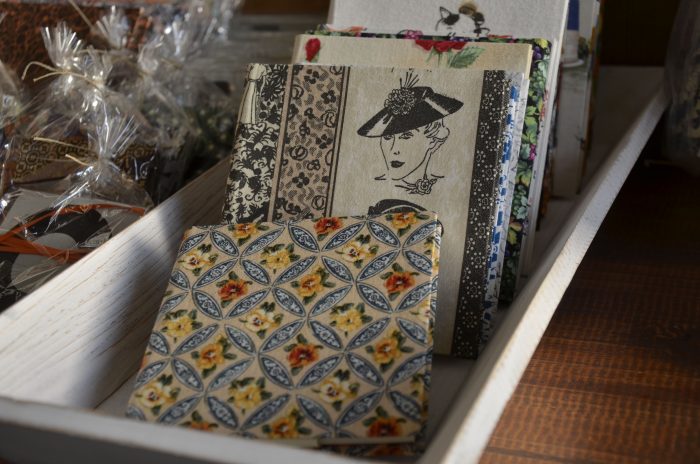
What a machine can make, was handmade before there were machines.
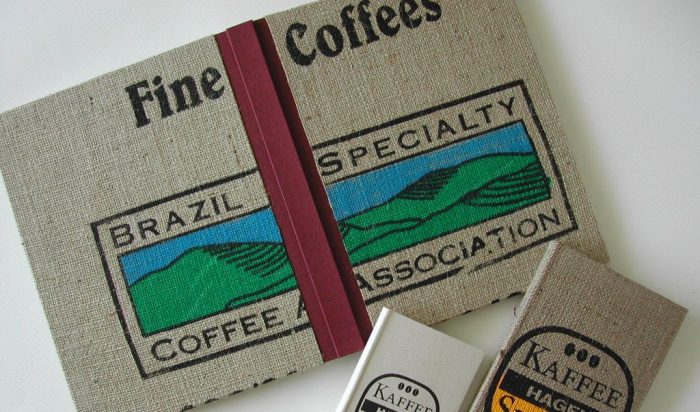
Of course there is a lot you need to watch out for. All paper, unless it is handmade, and all fabric comes with an inner direction. It makes a big difference whether to use the material lengthways or sideways. If both, paper and fabric, need to be glued together, the inner directions of both needs to be the same way – otherwise the two of them will argue for the rest of their days. Also these need to be parallel, not at an angle, and there may not be any creases, folds or wrinkles.
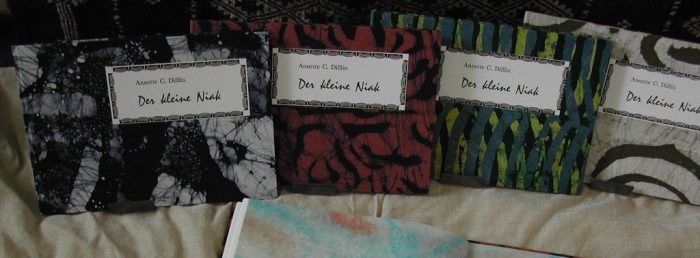
For backing paper usually Asian papers are chosen. Made from rather long plant fibres they won‘t tear even when wet while at the same time being very thin. And thin it needs to be because the „sandwich“ made of fabric and paper wants to go smoothly round corners and edges and into folds.
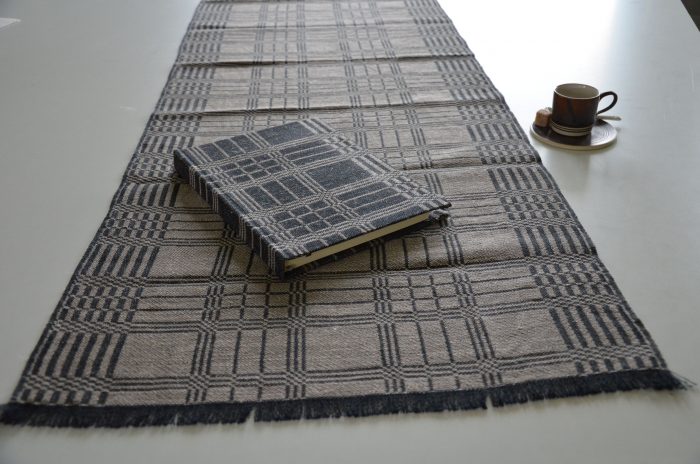
The Japanese paper will be glued onto the fabric using paste. This is cooked from water and starch and thus purely plant material. Once fabric and Japanese paper are glued together, they are pulled even and fixed to a board to dry stretched out without creasing or crumpling. The whole procedure, as any craft, depends on acquiring enough routine, proper care and attention, and resiliance to overcome frustration during the first stages before routine starts falling in place.
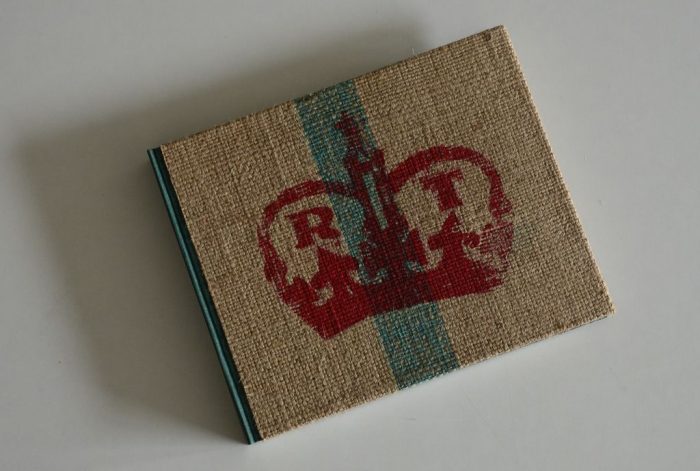
Over the years I must have cooked kilos of starch into paste and made hundreds of metres of fabric into bookcloth. Not all fabric will cooperate, though. All fabric containing poly-fibre will be no good, however, Scottish Tartan finds being turned into book cloth is beneath its dignity and will not work well either.
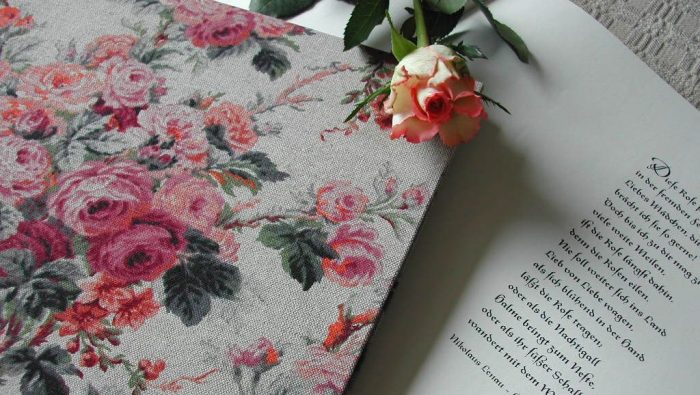
But Chiffon made from viscose, fabric made from silk or cotton and even sacks for coffee beans made from jute have turned within my hands into lovely book covers, including corduroy, English flower linen, Italian Jacquard and African handmade batik fabric.
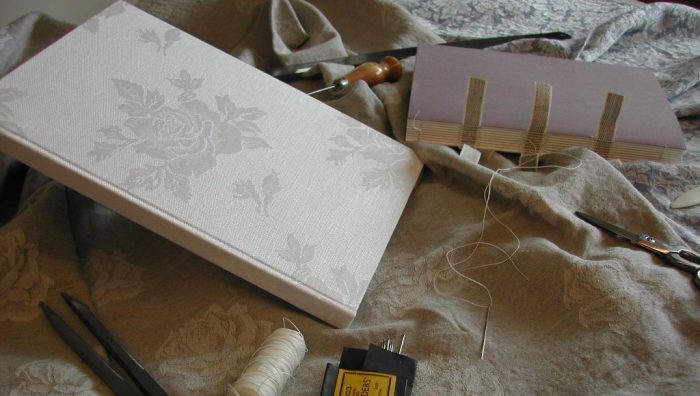
For reading and learning:
Kojiro Ikegami „Japanese Bookbinding“ Instructions from a Master Craftsman. Weatherhill. 1998. New York/Tokyo
Contact
Handmade printed and batik fabric from Africa to be had from Twiga-Design
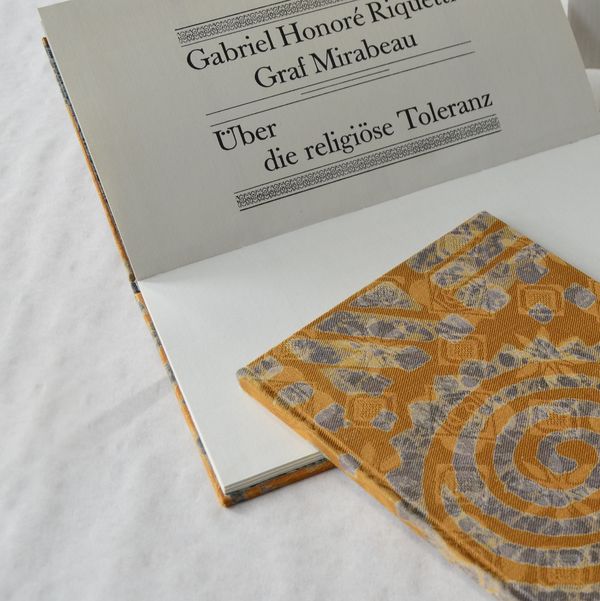
To be continued on 9 April 2024


My goodness, another little “surprise” installment. What interesting reading. Thank you Annette.